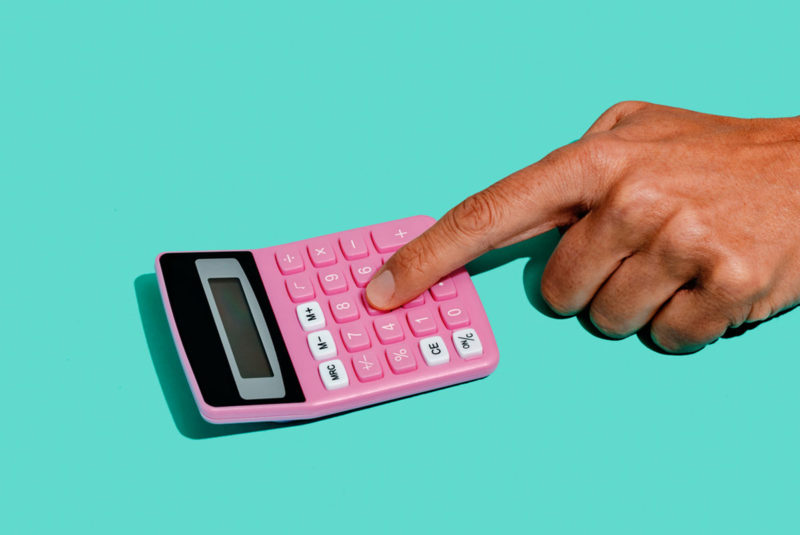A line of credit is a type of financing that’s essentially a hybrid between a loan and a credit card. Similar to a credit card, a line of credit lets you borrow money repeatedly — up to a limit. Yet like a loan, the interest rates on a line of credit can potentially be more affordable than a credit card.
If you want to finance a big project but you’re not sure exactly how much you need to borrow, a line of credit might benefit you. Learn more about this type of financing below, along with some of its pros and cons.
What Is a Line of Credit?
A line of credit is a type of revolving credit, not so different from a credit card. When you’re approved for a line of credit, the bank or credit union assigns you a credit limit. You can borrow up to that amount and will only pay interest on the funds you access.
Like a credit card, you are required to make at least a minimum payment each month. As you repay the money you borrow, your lender will let you access cash again, up to your limit. As long as the account is open and in good standing, you should be able to borrow and repay funds again and again.
By contrast, when you take out a loan you receive the funds in a single lump sum. On the plus side, your interest rates and payments are typically fixed over the life of your loan. This can make budgeting simple and the cost of financing easy to predict.
With a line of credit, your account balance can fluctuate significantly, depending upon the amount you draw out of your account. Most lines of credit come with variable interest rates as well. Both of these factors can cause your payments to change from month to month.
Line of Credit Types
Just like credit cards, lines of credit come in several different shapes and sizes. Understanding how different lines of credit work can help you choose the best fit for your situation.
Personal line of credit
You can use a personal line of credit to cover a wide variety of personal expenses. From home improvement projects to debt consolidation to unexpected expenses, a personal line of credit can offer a lot of borrowing flexibility.
When you apply for a personal line of credit, the lender will review your personal credit scores, credit reports, income, and debts. If you can satisfy the lender’s qualification standards, it will approve your application and the account will typically show up on your personal credit reports — Equifax®, TransUnion®, and Experian™ — within a few months or less.
Personal lines of credit come in two varieties — secured and unsecured. With secured lines of credit, you pledge collateral to the bank (sometimes in exchange for a lower rate or loan approval if your application was borderline). If you default on your payments, the bank may seize the asset (like your house or savings) to try to recuperate its losses.
Unsecured lines of credit, on the other hand, aren’t tied to an asset. However, because the financial institution is taking on more risk, there’s a good chance your interest rate will be higher.
Home equity line of credit
A home equity line of credit, or HELOC, is a popular type of revolving account that you secure with the equity in your home. It’s often called a second mortgage. Like personal lines of credit, a lender will evaluate your individual creditworthiness and your debt-to-income ratio when you apply for financing.
Because a HELOC is secured with your home equity, you may be able to qualify for a lower interest rate and better terms.
Despite the benefits, keep in mind that the risk you take on with a HELOC is significant. If you default on your payments, you risk losing your home.
Business line of credit
A business line of credit is usually a better choice than personal financing when you need to borrow money for a company you own. You can use a business line of credit to purchase inventory, boost cash flow, and for a variety of other business-related expenses. If you manage the account well, it may also help you build business credit.
Depending on the lender, it may want to review your business and personal credit as part of your application for funding. For secured business lines of credit, which are common, you may also need to pledge assets that your business owns.
On a positive note, many lenders don’t report business lines of credit to the personal credit bureaus. This is good news if you’re trying to keep your business and personal credit separate (as every small business owner should do).
How Do Lines of Credit Affect Your Credit Scores?
Payment history
Credit scoring models, like FICO and VantageScore, consider many factors when calculating your credit scores. Your payment history, of course, matters most. (Always keep those minimum payments on time!)
If you open a line of credit and always pay by the due date, the account might help you improve your credit scores. But if you make late payments — even on an occasional basis — that same line of credit could hurt your scores instead.
Credit utilization
The way you manage your revolving accounts can also affect your scores in a big way. Nearly one-third of your FICO Score is largely based on your credit utilization.
A high credit card balance could lower your credit scores — even with on-time payments — if it raises your credit utilization ratio. Because lines of credit are so similar to credit cards, many people believe that a high balance-to-limit ratio on these accounts may hurt credit scores as well. But that’s not true.
Scoring models don’t consider lines of credit when they calculate your revolving utilization ratio.
Length of credit history
When you first open a new line of credit, it could lower the average age of accounts on your credit reports. Since scoring models consider your average age of credit, a new credit account might make your credit scores drop — at least initially. As the line of credit grows older, however, it could help you here.
Keep in mind, length of credit history is only worth 15% of your FICO Score. So, while your average age of accounts matters, a line of credit might still help your scores overall if you pay on time or use it to lower your utilization ratio by paying off credit cards.
Credit inquiries
The last way a line of credit might impact your credit happens when you apply for the account. When you apply for financing, the lender will usually review your credit reports. This credit report access is called an inquiry, and it might affect your credit scores in a slightly negative way.
Hard credit inquiries (like those that take place when you apply for financing) have the potential to hurt your credit scores. They can stay on your reports for 24 months and may influence your credit scores for 12 months.
In general, a few credit inquiries won’t cause much damage. Credit inquiries only influence 10% of your FICO Score. So, as long as you’re not applying for new credit often, seeking a line of credit is unlikely to have a major impact on your credit scores.
Where Can I Find a Line of Credit?
Most financial institutions, such as banks and credit unions, offer lines of credit. Some of the major credit card issuers provide them to their customers. Remember, you typically need strong credit to qualify.
You may also be able to find lines of credit available from online lenders, especially if you’re searching for a line of credit for your business.
Line of Credit vs. Credit Card — Which Is Better?
If you want a flexible way to borrow, either a credit card or a line of credit might do the trick. Here are some benefits and drawbacks of each type of financing.
Ease of use
You can use your credit card to easily pay for purchases at brick-and-mortar retailers and with online businesses. But sometimes making a purchase with a line of credit requires more legwork.
Some banks will issue you a debit card you can use to easily draw on your line of credit. Other banks, however, may only give you a checkbook that you can use to pay others (if they accept checks) or deposit cash from your credit line into your bank account.
If you want to access cash specifically, a line of credit is the clear winner. Getting cash from a line of credit is generally more affordable and simpler than using a credit card cash advance, which we don’t recommend outside of emergencies.
Rewards
Credit cards trump lines of credit when it comes to reward-earning potential. Rewards credit cards can give you access to many benefits like cash back, travel perks, and more.
Plus, if you have a no annual fee credit card and you pay your full statement balance every month to avoid interest, by using your grace period, you can enjoy these perks free of charge (as long as you avoid other fees too).
Borrowing flexibility
Both lines of credit and credit cards let you borrow money up to your credit limit. Then, as you manage the account well and pay back at least some portion of what you’ve borrowed, you can access your available credit again.
However, most lines of credit don’t let you access funds forever. Even if you have perfect payment history, a line of credit’s “draw period” typically only lasts for a few years.
A credit card issuer, by contrast, will usually let you borrow again and again — perhaps for decades. As long as you use the account responsibly and your credit risk stays the same, the account should remain open.
Credit score impact
A well-managed credit card or line of credit has the potential to help you build credit. Consistent on-time payments can go a long way toward helping you earn good credit scores.
As mentioned, lines of credit don’t count toward your credit utilization ratio. So, if you’re going to borrow money that you don’t plan to pay off by the next statement due date, a line of credit may be better from a credit score perspective. Remember, if you revolve an outstanding balance on a credit card from month to month, your credit scores could suffer.
Interest rate
Credit cards usually aren’t a good choice when you need long-term financing (unless you get a card with a 0% intro APR). To save money on interest and avoid potential credit score damage, it’s best to pay your credit card balances in full every month.
Lines of credit tend to have lower interest rates than credit cards (though you should always check to be sure). So, if you don’t plan to pay off the money you borrow by the next billing statement, using a line of credit might save you money.
Is a Line of Credit Right for You?
A line of credit can work well in certain situations. It offers the borrowing flexibility of a credit card, but generally with lower interest rates.
Keep in mind that if you have no credit or bad credit, it may be tough to qualify for a line of credit — especially if you want to avoid higher interest rates. Credit cards for bad credit or no credit may be easier to qualify for, though you shouldn’t expect a large credit limit in most cases.
Also, even if your credit is strong enough to qualify for a line of credit, the lender may require you to put up collateral to secure financing. Be sure you’re comfortable taking on this risk.
Finally, ask yourself if you can afford the monthly payments — both now and in the future. If you crunch the numbers and believe a line of credit is a good fit, shop around for the best deal. Taking the time to compare interest rates from multiple lenders might save you thousands of dollars in the long run.
The Short Version
- A line of credit is a hybrid between a loan and a credit card. Similar to a credit card, a line of credit lets you borrow money repeatedly — up to a limit.
- There are personal lines of credit, HELOCs and business lines of credit
- Like a credit card, you have an interest rate and a credit limit




